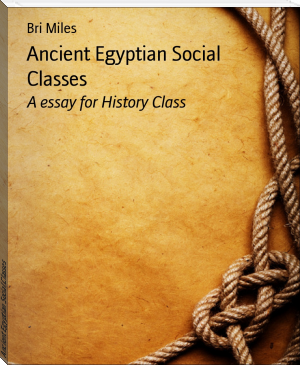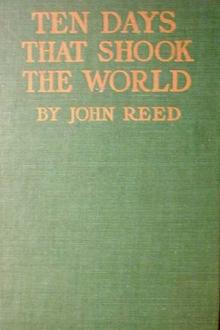Canada, Sir John George Bourinot [best time to read books .TXT] 📗

- Author: Sir John George Bourinot
Book online «Canada, Sir John George Bourinot [best time to read books .TXT] 📗». Author Sir John George Bourinot
From 1778 until 1783 the government of Canada was under the direction of General Haldimand, who possessed that decision of character absolutely essential at so critical a period of Canadian history. The Congress of the States had never despaired of obtaining the assistance of the French Canadians, and of {290} bringing the country into the new republic. Haldimand had to arrest Du Calvet, Mesplet, and Jotard, as leaders in a seditious movement against England. Fleury Mesplet put up in Montreal the first printing-press, which gave him and his friends superior facilities for circulating dangerous appeals to the restless element of the population. Du Calvet was a French Protestant, in active sympathy with Congress, and had a violent controversy with Haldimand, who was, at last, forced to take severe measures against him. While on his way to England he was drowned, and the country spared more of his dangerous influence. Jotard, a French attorney, was a contributor to a paper owned by Mesplet, and a warm sympathiser with the efforts of Admiral D'Estaing and General Lafayette to win back the allegiance of the French Canadians. The appeals of these two distinguished men to the memories of the old subjects of France had no immediate effect except upon a very small class, although it might have been different had French troops made their appearance on the St. Lawrence. One Canadian priest, La Valiniere, who was connected with the seminary of St. Sulpice in Montreal, was sent to England with the approval of the bishop, for his openly expressed sympathy with France. Happily Monseigneur Briand and the great majority of the clergy stood always firm on the side of England.
[1] The first paper printed in French Canada was the _Quebec Gazette_, which appeared in 1764.
XXI.
COMING OF THE LOYALISTS.
(1783-1791.)
It was during Governor Haldimand's administration that one of the most important events in the history of Canada occurred as a result of the American war for independence. This event was the coming to the provinces of many thousand people, known as United Empire Loyalists, who, during the progress of the war, but chiefly at its close, left their old homes in the thirteen colonies. When the Treaty of 1783 was under consideration, the British representatives made an effort to obtain some practical consideration from the new nation for the claims of this unfortunate people who had been subject to so much loss and obloquy during the war. All that the English envoys could obtain was the insertion of a clause in the treaty to the effect that Congress would recommend to the legislatures of the several States measures of restitution--a provision which turned out, as Franklin intimated at the time, a perfect nullity. The English Government subsequently {292} indemnified these people in a measure for their self-sacrifice, and among other things gave a large number of them valuable tracts of land in the provinces of British North America. Many of them settled in Nova Scotia, others founded New Brunswick and Upper Canada, now Ontario. Their influence on the political fortunes of Canada has been necessarily very considerable. For years they and their children were animated by a feeling of bitter animosity against the United States, the effects of which could be traced in later times when questions of difference arose between England and her former colonies. They have proved with the French Canadians a barrier to the growth of any annexation party, and as powerful an influence in national and social life as the Puritan element itself in the Eastern and Western States.
Among the sad stories of the past the one which tells of the exile of the Loyalists from their homes, of their trials and struggles in the valley of the St. Lawrence, then a wilderness, demands our deepest sympathy. In the history of this continent it can be only compared with the melancholy chapter which relates the removal of the French population from their beloved Acadia. During the Revolution they comprised a very large, intelligent, and important body of people, in all the old colonies, especially in New York and at the South, where they were in the majority until the peace. They were generally known as Tories, whilst their opponents, who supported independence, were called Whigs. Neighbour was arrayed against {293} neighbour, families were divided, the greatest cruelties were inflicted as the war went on upon men and women who believed it was their duty to be faithful to king and country. As soon as the contest was ended, their property was confiscated in several States. Many persons were banished and prohibited from returning to their homes. An American writer, Sabine, tells us that previous to the evacuation of New York, in the month of September, 1783, "upwards of twelve thousand men, women, and children embarked at the city, at Long and Staten Islands, for Nova Scotia and the Bahamas." Very wrong impressions were held in those days of the climate and resources of the provinces to which these people fled. Time was to prove that the lot of many of the loyalists had actually fallen in pleasant places, in Nova Scotia, New Brunswick, and Upper Canada; that the country, where most of them settled, was superior in many respects to the New England States, and equal to the State of New York from which so many of them came.
It is estimated that between forty and fifty thousand people reached British North America by 1786. They commenced to leave their old homes soon after the breaking out of the war, but the great migration took place in 1783-84. Many sought the shores of Nova Scotia, and founded the town of Shelburne, which at one time held a population of ten or twelve thousand souls, the majority of whom were entirely unsuited to the conditions of the rough country around them, and soon sought homes elsewhere. Not a few settled in more favourable parts {294} of Nova Scotia, and even in Cape Breton. Considerable numbers found rest in the beautiful valley of the St. John River, and founded the province of New Brunswick. As many more laid the beginnings of Upper Canada, in the present county of Glengarry, in the neighbourhood of Kingston and the Bay of Quinte, on the Niagara River, and near the French settlements on the Detroit. A few also settled in the country now known as the Eastern Townships of French Canada. A great proportion of the men were officers and soldiers of the regiments which were formed in several colonies out of the large loyal population. Among them were also men who had occupied positions of influence and responsibility in their respective communities, divines, judges, officials, and landed proprietors, whose names were among the best in the old colonies, as they are certainly in Canada. Many among them gave up valuable estates which had been acquired by the energy of their ancestors. Unlike the Puritans who founded New England, they did not take away with them their valuable property in the shape of money and securities, or household goods. A rude log hut by the side of a river or lake, where poverty and wretchedness were their lot for months, and even years in some cases, was the refuge of thousands, all of whom had enjoyed every comfort in well-built houses, and not a few even luxury in stately mansions, some of which have withstood the ravages of time and can still be pointed out in New England. Many of the loyalists were quite unfitted for the rude experiences of a pioneer life, and years passed {295} before they and their children conquered the wilderness and made a livelihood. The British Government was extremely liberal in its grants of lands to this class of persons in all the provinces.
The government supplied these pioneers in the majority of cases with food, clothing, and necessary farming implements. For some years they suffered many privations; one was called "the year of famine," when hundreds in Upper Canada had to live on roots, and even the buds of trees, or anything that might sustain life. Fortunately some lived in favoured localities, where pigeons and other birds, and fish of all kinds, were plentiful. In the summer and fall there were quantities of wild fruit and nuts. Maple sugar was a great luxury, when the people once learned to make it from the noble tree, whose symmetrical leaf may well be made the Canadian national emblem. It took the people a long while to accustom themselves to the conditions of their primitive pioneer life, but now the results of the labours of these early settlers and their descendants can be seen far and wide in smiling fields, richly laden orchards, and gardens of old-fashioned flowers throughout the country which they first made to blossom like the rose. The rivers and lakes were the only means of communication in those early times, roads were unknown, and the wayfarer could find his way through the illimitable forests only by the help of the "blazed" trees and the course of streams. Social intercourse was infrequent except in autumn and winter, when the young managed to assemble as they always will. Love and courtship went on {296} even in this wilderness, though marriage was uncertain, as the visits of clergymen were very rare in many places, and magistrates could alone tie the nuptial knot--a very unsatisfactory performance to the cooler lovers who loved their church, its ceremonies and traditions, as dearly as they loved their sovereign. The story of those days of trial has not yet been adequately written; perhaps it never will be, for few of those pioneers have left records behind them. As we wander among the old burying grounds of those founders of Western Canada and New Brunswick, and stand by the gray, moss-covered tablets, with names effaced by the ravages of years, the thought will come to us, what interesting stories could be told by those who are laid beneath the sod, of sorrows and struggles, of hearts sick with hope deferred, of expectations never realised, of memories of misfortune and disaster in another land where they bore so much for a stubborn and unwise king. Yet these grass-covered mounds are not simply memorials of suffering and privation; each could tell a story of fidelity to principle, of forgetfulness of self-interest, of devotion and self-sacrifice--the grandest story that human annals can tell--a story that should be ever held up to the admiration and emulation of the young men and women of the present times, who enjoy the fruits of the labours of those loyal pioneers.
Although no noble monument has yet been raised to the memory of these founders of new provinces--of English-speaking Canada; although the majority lie forgotten in old graveyards where the grass has {297} grown rank, and common





Comments (0)